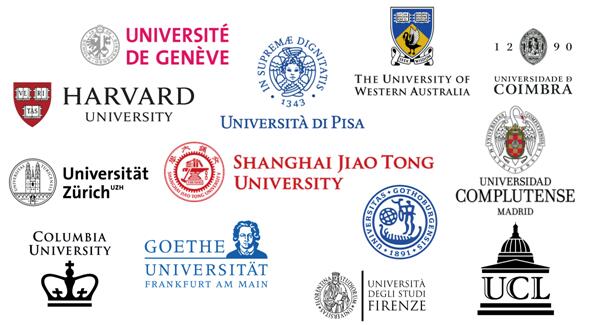Dr. Renji: These misconceptions need to be noted. After the last bone fracture in her life, the centenarian grandmother made a big comeback
A hundred year old grandmother accidentally fell at home and was diagnosed with a intertrochanteric fracture of the femur. After a fracture, the elderly person is unable to turn over and experiences severe pain as soon as they do so. They cannot sleep at night and are unable to take care of themselves when urinating or defecating. And this type of fracture is known as the "last fracture in life" in the medical industry, which can cause various serious complications throughout the patient's body, and even lead to the patient's death.
However, can centenarians tolerate anesthesia and overcome various difficulties such as postoperative extubation and rehabilitation? The Department of Traumatology and Orthopedics at Renji Hospital affiliated with Shanghai Jiao Tong University bravely entered the age restricted area and performed intramedullary nail fixation surgery for intertrochanteric fractures of the femur. The centenarian grandmother's postoperative recovery was good, and she started a new quality of life.
Surgical Challenge for Centenarians After Fractures
Surgical Challenge for Centenarians After Fractures
Intertrochanteric fracture of the femur has always been known as the "last fracture in life" for elderly patients. Conservative treatment of this type of fracture can cause serious complications such as persistent occult blood loss, deep vein thrombosis in the lower limbs, pulmonary infection, urinary tract infection, pulmonary embolism, etc. The mortality rate is very high, with a mortality rate of over 20% within one month. Timely evaluation and early surgery are the best means to reduce mortality. On the third day after the fracture, the centenary grandmother went to the emergency department of the trauma orthopedics department at Renji Hospital and strongly requested surgery, and was willing to bear all the risks during the perioperative period.
Having surgery after the age of one hundred can be considered a great challenge. After a comprehensive examination, experts found that the centenarian grandmother can walk and take care of herself, but she suffers from diseases such as hypertension and deafness. At the same time, the risk of anesthesia should not be underestimated. Zhao Yanhua, the deputy chief physician of the anesthesia department, arrived early in the ward for evaluation. In order to reduce the risks of intraoperative anesthesia and postoperative difficulty in extubation, a combination of spinal anesthesia and nerve block anesthesia was performed on the patient.
After the deputy chief physician of the trauma orthopedics department, Li Zhanyu, and the attending physician, Zhou Chun, closed the fracture site of the centenary grandmother and completed the intramedullary nail fixation in just 40 minutes. The intraoperative bleeding was only about 50 milliliters, but due to this type of fracture, the preoperative occult blood loss may be 800 to 1200 milliliters. During the operation, 400 milliliters of red blood cells were infused and the patient was successfully returned to the hospital room.

The next day, the doctors injected 400 milliliters of red blood cells into the centenarian grandmother. The elderly woman was already able to eat and turn over on her own, sit by the bed for half an hour with the company of her family, and sleep comfortably at night. The centenarian grandmother finally showed a smile and was transferred to a medical consortium hospital for further rehabilitation treatment 5 days after surgery.
Li Zhanyu said that there are many misunderstandings among the public regarding elderly patients with intertrochanteric fractures of the femur. Many elderly people are afraid of surgical risks and choose conservative treatment. In fact, conservative treatment does not necessarily mean safety. Elderly people will face various problems, such as severe limb pain, reluctance to turn over or even move, causing deep vein thrombosis in the lower limbs, and easily leading to pulmonary embolism, cerebral infarction, and myocardial infarction. Long term bed rest can cause bedsores, lung infections, and urinary system infections, which are fatal complications. In addition, continuous blood loss at the fracture end can cause severe anemia and exacerbate pre-existing heart, lung, and brain diseases.
Conservatism also carries risks, and rehabilitation and calcium supplementation are both important
Li Zhanyu said that there are many misunderstandings among the public regarding elderly patients with intertrochanteric fractures of the femur. Many elderly people are afraid of surgical risks and choose conservative treatment. In fact, conservative treatment does not necessarily mean safety. Elderly people will face various problems, such as severe limb pain, reluctance to turn over or even move, causing deep vein thrombosis in the lower limbs, and easily leading to pulmonary embolism, cerebral infarction, and myocardial infarction. Long term bed rest can cause bedsores, lung infections, and urinary system infections, which are fatal complications. In addition, continuous blood loss at the fracture end can cause severe anemia and exacerbate pre-existing heart, lung, and brain diseases.
For elderly or even centenarians, as long as they can tolerate anesthesia, it is still recommended to undergo surgery as early as possible. After early surgery, patients can turn over and sit straight, which is easy to care for. For stable fractures, they can walk on the ground as soon as possible, and their quality of life is significantly improved. During and after surgery, timely blood transfusion can be performed to correct anemia.
In addition, the selection of surgical timing is also important. The guidelines recommend surgery within 24 hours as much as possible, which can significantly reduce the incidence of postoperative complications and mortality; After 36 to 48 hours, the risk of death significantly increases, and surgery cannot be performed until all examinations are completed and all indicators are close to normal. "After the adjustment is completed, lung infection may have already occurred and the opportunity for surgery has been lost." Li Zhanyu said that if the overall condition is poor and there are many internal medicine diseases, surgery should also be performed within 72 hours at the latest after adjusting the state. "This type of surgery is a life-saving surgery, and the earlier the preparation before surgery is complete, the better. It requires not only the courage and attention of doctors, but also the understanding and support of family members."




